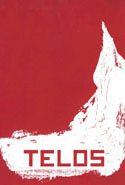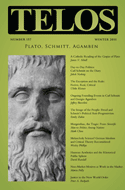By Christian Kronsted · Tuesday, August 13, 2013 As an occasional feature on TELOSscope, we highlight a past Telos article whose critical insights continue to illuminate our thinking and challenge our assumptions. Today, Christian Kronsted looks at Lowell A. Dunlap’s “Hume, James, and Husserl on the Self,” from Telos 2 (Fall 1968).
 With the publication of A Treatise Of Human Nature, David Hume turned the philosophical community of his time upside down with his provocative skepticism and denial of a cohesive self. Since its initial publication, Hume’s claim that the self is nothing but a bundle of perceptions has plagued philosophers and psychologists alike, and has inspired many to completely abandon the idea of a coherent self. Yet a central question remains largely unanswered: if there is not a self, what is doing the thinking, and how is it done? If a person does not have a “self,” how come human beings think of themselves as unique and separate entities that have subjective experiences? Lowell A. Dunlap’s article “Hume, James, and Husserl on the Self” investigates how William James and Edmund Husserl tackled the notion of personal identity in the aftermath of Hume’s philosophy. With the publication of A Treatise Of Human Nature, David Hume turned the philosophical community of his time upside down with his provocative skepticism and denial of a cohesive self. Since its initial publication, Hume’s claim that the self is nothing but a bundle of perceptions has plagued philosophers and psychologists alike, and has inspired many to completely abandon the idea of a coherent self. Yet a central question remains largely unanswered: if there is not a self, what is doing the thinking, and how is it done? If a person does not have a “self,” how come human beings think of themselves as unique and separate entities that have subjective experiences? Lowell A. Dunlap’s article “Hume, James, and Husserl on the Self” investigates how William James and Edmund Husserl tackled the notion of personal identity in the aftermath of Hume’s philosophy.
Continue reading →
By David Randall · Wednesday, January 11, 2012 David Randall’s “Humean Aesthetics and the Rhetorical Public Sphere” appears in Telos 157 (Winter 2011). Read the full version online at the TELOS Online website, or purchase a print copy of the issue here.
 This article aims to locate in the writings of David Hume the rhetorical aesthetics and philosophy of judgment that, under the name of “the conversable world,” constituted, in its essentials, the discursive, political, and moral project of Jürgen Habermas’s public sphere. Here the idea of the public sphere was shorn of the Kantian imperative to reason. Instead, Hume’s “conversable world” registered rhetorical assumptions—the key words reflecting the influence of rhetoric, and departing from Kantian strictures, were “disposition,” “pleasure,” and “best manner.” The existence of this Humean rhetorical aesthetics, as capable as Kant’s rationalizing aesthetics to claim itself as representative of the bourgeois public sphere, allows for the displacement of Kant’s aesthetics, in its historical aspect, from the conception of the public sphere. Humean rhetorical aesthetics, in turn, provide the essential historical component for the various ahistorical rhetorical critiques and revisions of Habermas’s public sphere theory, and of his philosophy writ large. It also allows for the formulation of what we may call a Humean public sphere. In contradistinction to the Kantian public sphere, the rhetorical philosophy of Hume associated the public sphere with a very different standard of judgment, a very different aesthetics, and a very different approach to teleology. This article aims to locate in the writings of David Hume the rhetorical aesthetics and philosophy of judgment that, under the name of “the conversable world,” constituted, in its essentials, the discursive, political, and moral project of Jürgen Habermas’s public sphere. Here the idea of the public sphere was shorn of the Kantian imperative to reason. Instead, Hume’s “conversable world” registered rhetorical assumptions—the key words reflecting the influence of rhetoric, and departing from Kantian strictures, were “disposition,” “pleasure,” and “best manner.” The existence of this Humean rhetorical aesthetics, as capable as Kant’s rationalizing aesthetics to claim itself as representative of the bourgeois public sphere, allows for the displacement of Kant’s aesthetics, in its historical aspect, from the conception of the public sphere. Humean rhetorical aesthetics, in turn, provide the essential historical component for the various ahistorical rhetorical critiques and revisions of Habermas’s public sphere theory, and of his philosophy writ large. It also allows for the formulation of what we may call a Humean public sphere. In contradistinction to the Kantian public sphere, the rhetorical philosophy of Hume associated the public sphere with a very different standard of judgment, a very different aesthetics, and a very different approach to teleology.
Continue reading →
|
|
 With the publication of A Treatise Of Human Nature, David Hume turned the philosophical community of his time upside down with his provocative skepticism and denial of a cohesive self. Since its initial publication, Hume’s claim that the self is nothing but a bundle of perceptions has plagued philosophers and psychologists alike, and has inspired many to completely abandon the idea of a coherent self. Yet a central question remains largely unanswered: if there is not a self, what is doing the thinking, and how is it done? If a person does not have a “self,” how come human beings think of themselves as unique and separate entities that have subjective experiences? Lowell A. Dunlap’s article “Hume, James, and Husserl on the Self” investigates how William James and Edmund Husserl tackled the notion of personal identity in the aftermath of Hume’s philosophy.
With the publication of A Treatise Of Human Nature, David Hume turned the philosophical community of his time upside down with his provocative skepticism and denial of a cohesive self. Since its initial publication, Hume’s claim that the self is nothing but a bundle of perceptions has plagued philosophers and psychologists alike, and has inspired many to completely abandon the idea of a coherent self. Yet a central question remains largely unanswered: if there is not a self, what is doing the thinking, and how is it done? If a person does not have a “self,” how come human beings think of themselves as unique and separate entities that have subjective experiences? Lowell A. Dunlap’s article “Hume, James, and Husserl on the Self” investigates how William James and Edmund Husserl tackled the notion of personal identity in the aftermath of Hume’s philosophy.  This article aims to locate in the writings of David Hume the rhetorical aesthetics and philosophy of judgment that, under the name of “the conversable world,” constituted, in its essentials, the discursive, political, and moral project of Jürgen Habermas’s public sphere. Here the idea of the public sphere was shorn of the Kantian imperative to reason. Instead, Hume’s “conversable world” registered rhetorical assumptions—the key words reflecting the influence of rhetoric, and departing from Kantian strictures, were “disposition,” “pleasure,” and “best manner.” The existence of this Humean rhetorical aesthetics, as capable as Kant’s rationalizing aesthetics to claim itself as representative of the bourgeois public sphere, allows for the displacement of Kant’s aesthetics, in its historical aspect, from the conception of the public sphere. Humean rhetorical aesthetics, in turn, provide the essential historical component for the various ahistorical rhetorical critiques and revisions of Habermas’s public sphere theory, and of his philosophy writ large. It also allows for the formulation of what we may call a Humean public sphere. In contradistinction to the Kantian public sphere, the rhetorical philosophy of Hume associated the public sphere with a very different standard of judgment, a very different aesthetics, and a very different approach to teleology.
This article aims to locate in the writings of David Hume the rhetorical aesthetics and philosophy of judgment that, under the name of “the conversable world,” constituted, in its essentials, the discursive, political, and moral project of Jürgen Habermas’s public sphere. Here the idea of the public sphere was shorn of the Kantian imperative to reason. Instead, Hume’s “conversable world” registered rhetorical assumptions—the key words reflecting the influence of rhetoric, and departing from Kantian strictures, were “disposition,” “pleasure,” and “best manner.” The existence of this Humean rhetorical aesthetics, as capable as Kant’s rationalizing aesthetics to claim itself as representative of the bourgeois public sphere, allows for the displacement of Kant’s aesthetics, in its historical aspect, from the conception of the public sphere. Humean rhetorical aesthetics, in turn, provide the essential historical component for the various ahistorical rhetorical critiques and revisions of Habermas’s public sphere theory, and of his philosophy writ large. It also allows for the formulation of what we may call a Humean public sphere. In contradistinction to the Kantian public sphere, the rhetorical philosophy of Hume associated the public sphere with a very different standard of judgment, a very different aesthetics, and a very different approach to teleology. 






